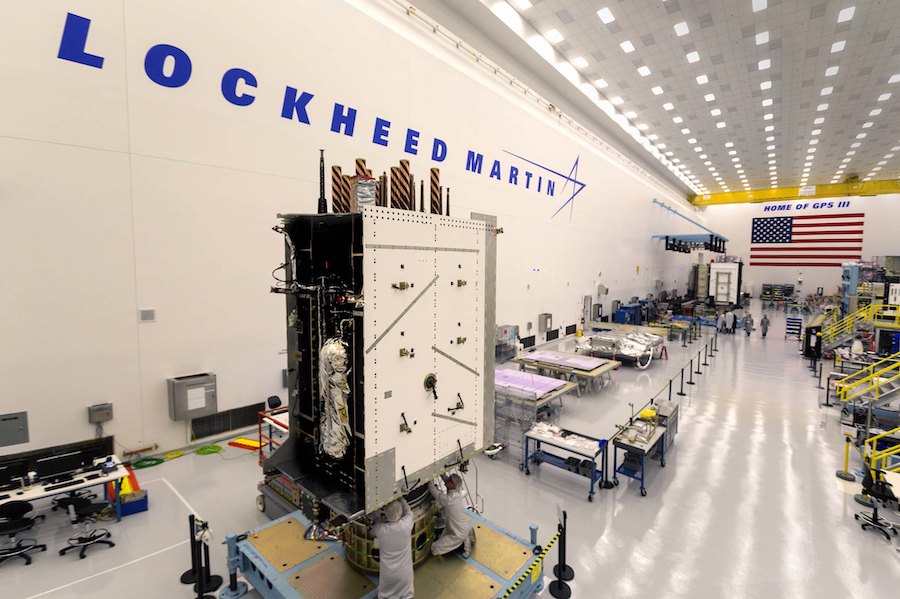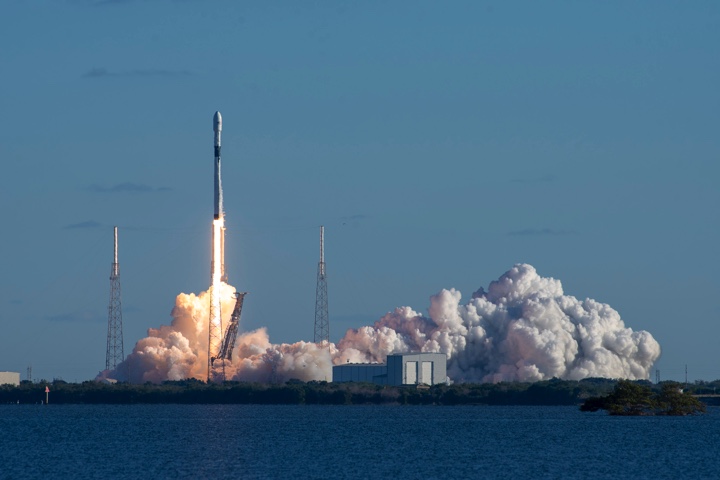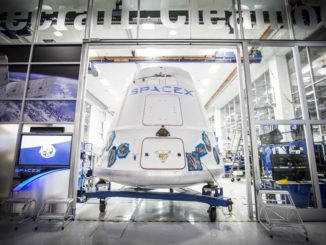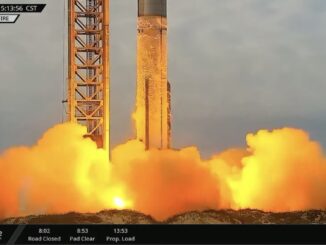
U.S. military officials said Tuesday the launch of the next satellite for the GPS navigation network — planned for April 29 on a SpaceX Falcon 9 rocket — has been delayed to no earlier than June 30 to avoid exposing launch crews to the COVID-19 viral disease.
However, the next launch of the military’s X-37B spaceplane remains on track for liftoff in May on a United Launch Alliance Atlas 5 rocket, officials said.
The U.S. Space Force said Tuesday that the launch of the next Global Positioning System satellite from Cape Canaveral would be delayed from late April “to minimize the potential of COVID-19 exposure to the launch crew and early-orbit operators.”
The Space Force’s Space and Missile Systems Center, which oversees the military’s launch and satellite programs, said the two-month delay in the next GPS satellite launch would have no impacts on the overall health of the GPS network, which is used by military forces and civilians around the world.
“The current GPS constellation is healthy, allowing for a strategic pause to ensure the health and safety of our force without operational impact,” SMC said in a press release.
SMC said it will re-evaluate the launch schedule for the next GPS satellite in May.
“We do not make this decision lightly, however, given our GPS constellation remains strong, we have the opportunity to make a deliberate decision to maintain our mission assurance posture, without introducing additional health risk to personnel or mission risk to the launch,” said Lt. Gen. John F. Thompson, SMC commander and program executive officer for space, in a press release.
GPS satellites orbit the Earth at an altitude of approximately 12,550 miles (20,200 kilometers), with an inclination of 55 degrees to the equator. The network broadcasts global positioning and timing signals, supporting applications ranging from guided bombs to billions of smartphones used by civilians around the world.
Military officials said there are 31 GPS satellites currently in the fleet, and they expect no gaps in coverage or capability caused by the launch delay.
“The GPS system supports vital U.S. and allied operations worldwide, unabated,” Thompson said. “As the COVID-19 pandemic is a threat to national security, likewise, rescheduling the launch is in the interest of national security. We have to get it right the first time, and protecting our people is just as important as cost, schedule, and performance.”
The next GPS satellite to launch is currently in a processing facility near Cape Canaveral after shipment from its Lockheed Martin factory in Colorado earlier this year. It’s the third spacecraft in the newest generation of GPS satellites, called the GPS 3-series.

The GPS 3 SV03 satellite is named “Columbus” after Christopher Columbus, the Italian explorer who visited the Americas on four expeditions beginning in 1492. The SV01 and SV02 spacecraft — launched in 2018 and 2019 — are named Vespucci and Magellan.
Space Force officials said they still expect to launch three GPS satellites this year. All of the GPS satellites planned for launch this year will fly on SpaceX Falcon 9 rockets from Cape Canaveral.
The launch of the GPS 3 SV03 satellite — now planned in late June — will be SpaceX’s first launch on a mission for the Space For since the new military service was established in December. The next GPS launch will also mark the first time SpaceX will attempt to recover the Falcon 9’s first stage booster on a National Security Space Launch mission, the designation for the military’s highest-priority space launches.
In preparation for the launch in late June, SMC said teams will introduce procedural and facility changes at the GPS 3 launch and checkout facility, located at a Lockheed Martin facility near Denver, to reduce the size of the crew onsite to ensure “adequate physical distancing.”
“Once these efforts are completed, and the crews have rehearsed and are deemed proficient and ready to execute under these modified conditions, we fully intend to return to our launch cadence for deploying GPS 3 satellites,” said Col. Edward Byrne, chief of SMC’s Medium Earth Orbit Space Systems Division.
As of Monday, CNBC reported that six SpaceX employees have tested positive for the coronavirus. ULA confirmed Monday that one of its employees at a facility near Denver tested positive for the virus.
Other Space Force operations are proceeding according to plan, SMC said.
The most recent GPS satellite to be launched — named GPS 3 SV02 — was incorporated into the operational GPS constellation April 1, SMC said. That satellite lifted off last August on top of a United Launch Alliance Delta 4 rocket.
And the Space Force’s sixth and final AEHF secure communications satellite successfully launched from Cape Canaveral on a ULA Atlas 5 rocket March 26.

Space Force officials are also moving forward with preparations for launch of the military’s X-37B spaceplane aboard the next flight of ULA’s Atlas 5 rocket next month, according to Col. Robert Bongiovi, SMC’s launch enterprise director.
That mission is codenamed USSF-7, and was formerly known as AFSPC-7.
“We have decided to continue with the USSF-7 launch,” Bongiovi said in a statement in response to questions from Spaceflight Now.
Space Force officials last week said the USSF-7 mission was scheduled for launch May 20.
Built by Boeing and readied for launch in a former space shuttle hangar at NASA’s Kennedy Space Center, the X-37B spaceplane will be encapsulated inside the Atlas 5’s payload fairing and transported to Cape Canaveral’s Complex 41 launch pad early next month for integration with the launch vehicle.
Stacking of the Atlas 5 rocket inside ULA’s Vertical Integration Facility should begin later this month.
The military has two X-37B vehicles, which launch atop conventional rockets and can remain in orbit for years to perform top secret missions. The reusable spaceplane, which flies without astronauts on-board, resembles a miniature space shuttle and returns to Earth for landing on a runway.
There have been five X-37B missions since 2010.
Email the author.
Follow Stephen Clark on Twitter: @StephenClark1.



